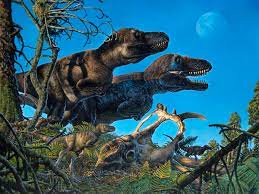Hello darkness, our old friend, we have come to see you again.
At the center of the giant galaxy 87, 55 million light-years from Earth, there is a black hole more than 38 billion kilometers across and as large as 6.5 billion suns, known as a black hole.
In 2017, a team of astronomers operating the Event Horizon Telescope, an array of antennas spread across the globe, produced an image of the black hole in Messier 87, or M87. According to Albert Einstein's 1915 theory of general relativity, the image revealed a ring of hot gas swirling around a dark vacuum, like water running around a drain. When the film released in 2019, it was the front page of media around the world. It is now in the collection of the Museum of Modern Art in New York.
Now, the same team of scientists has done it again in a better way. In 2018, a year after the first image was captured, astronomers again looked at M87's darkness, providing greater resolution with a slightly expanded phase. The result was released last week Journal of Astronomy and AstrophysicsThe same irregular ring and central hole still show up in considerable detail, suggesting that astronomers have gotten things right for the first time.
“The first image of a black hole looked so much like the mathematical predictions that it almost seemed like a fluke,” said Dominic Chang, a PhD in physics at Harvard who works on the Event Horizon team. Press release Published by the Harvard & Smithsonian Center for Astrophysics in Cambridge, Massachusetts, where the project is based.
“Having the opportunity to do new experiments using new data and with a new telescope and see the same structure is an important confirmation of our very important results,” he said.
A change in the ring around the M87 black hole. Its bright knot has moved 30 degrees counterclockwise around the ring from where it was a year ago. Astronomers said they predicted the hot spot would move.
“Although general relativity dictates that the size of the ring should be fairly constant, the turbulent and irregular accretion disk around the black hole causes the bright part of the emission ring to oscillate around a common core,” said postdoctoral researcher Britt Jeter. in Academia Sinica Institute of Astronomy and Astrophysics, Taiwan, in press release. “The amount of wobble we see over time is something that can be used to test our theories about the magnetic field and plasma environment around the black hole.”
Shepard Toolman, a researcher at the Center for Astrophysics and founding director of the Event Horizon Collaboration, added in an email: “In other words, the M87 supermassive black hole is behaving exactly as we thought it would.”
For Einstein, black holes were just one of many problematic predictions that arose from general relativity, which attributed what we call gravity to distortions in the geometry of spacetime. One was that the universe was expanding. Another is that if too much matter or energy is concentrated within a certain radius—now called the event horizon—it will forever collapse into a hole in space-time that even light cannot escape.
Einstein agreed with mathematics, but thought that nature would find a way to design such extravagance. But scientists now know that the universe is full of black holes; Experiments like the Laser Interferometry Gravitational-Wave Observatory, or LIGO, have heard them collide, and the Event Horizon Telescope has brought them into stark reality. Many black holes are dead stars that have collapsed as they run out of thermonuclear fuel, but a black hole millions or billions of times larger than a normal star is at the center of most galaxies. Astronomers still don't know how they came to be.
Thanks to a quirk of nature, these two supermassive black holes — M87 and the one at the center of our own Milky Way galaxy — are large enough in the sky to be imaged and studied by the Event Horizon Telescope. An image of our black hole, Sgr A*, located 27,000 light-years from Earth in the direction of Sagittarius, debuted in 2022.
We can expect more from these sketches of destiny. Doeleman and his team plan to continue adding them to their network and eventually make a movie of black holes. Die of envy, Netflix!
Dennis Overby is the Times' space correspondent, also covering physics and astronomy. Other works by Dennis Overby





